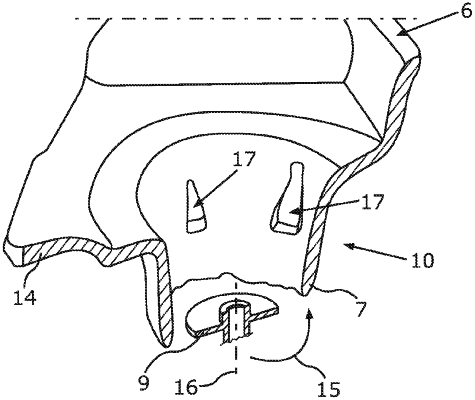| CPC B60R 13/0206 (2013.01) [B60R 13/02 (2013.01); B60R 21/04 (2013.01); B60R 21/0428 (2013.01)] | 13 Claims |

|
1. A component for fastening an interior lining part to a structural part of a vehicle, comprising:
a support element, wherein the interior lining part is fastenable to the structural part via the support element, wherein
the support element has a fastening region with a surface that extends perpendicular to a fastening direction, the fastening direction being a direction in which the interior lining part is fastenable to the structural part,
the support element has at least one deformation region extending from the fastening direction and having a meandering shape and is deformable under application of a force, wherein the meandering shape includes a serpentine cross-section in a plane, the plane being parallel to the fastening direction and perpendicular to the surface of the fastening region, wherein
the at least one deformation region extends circumferentially about an imaginary axis such that the imaginary axis is located in the center of the deformation region, the imaginary axis being within or parallel to the plane, and wherein
the meandering shape includes at least one through-opening configured to set an energy absorption capacity of the deformation region in a targeted manner, the through-opening being spaced radially from the imaginary axis such that the imaginary axis does not intersect the through-opening.
|